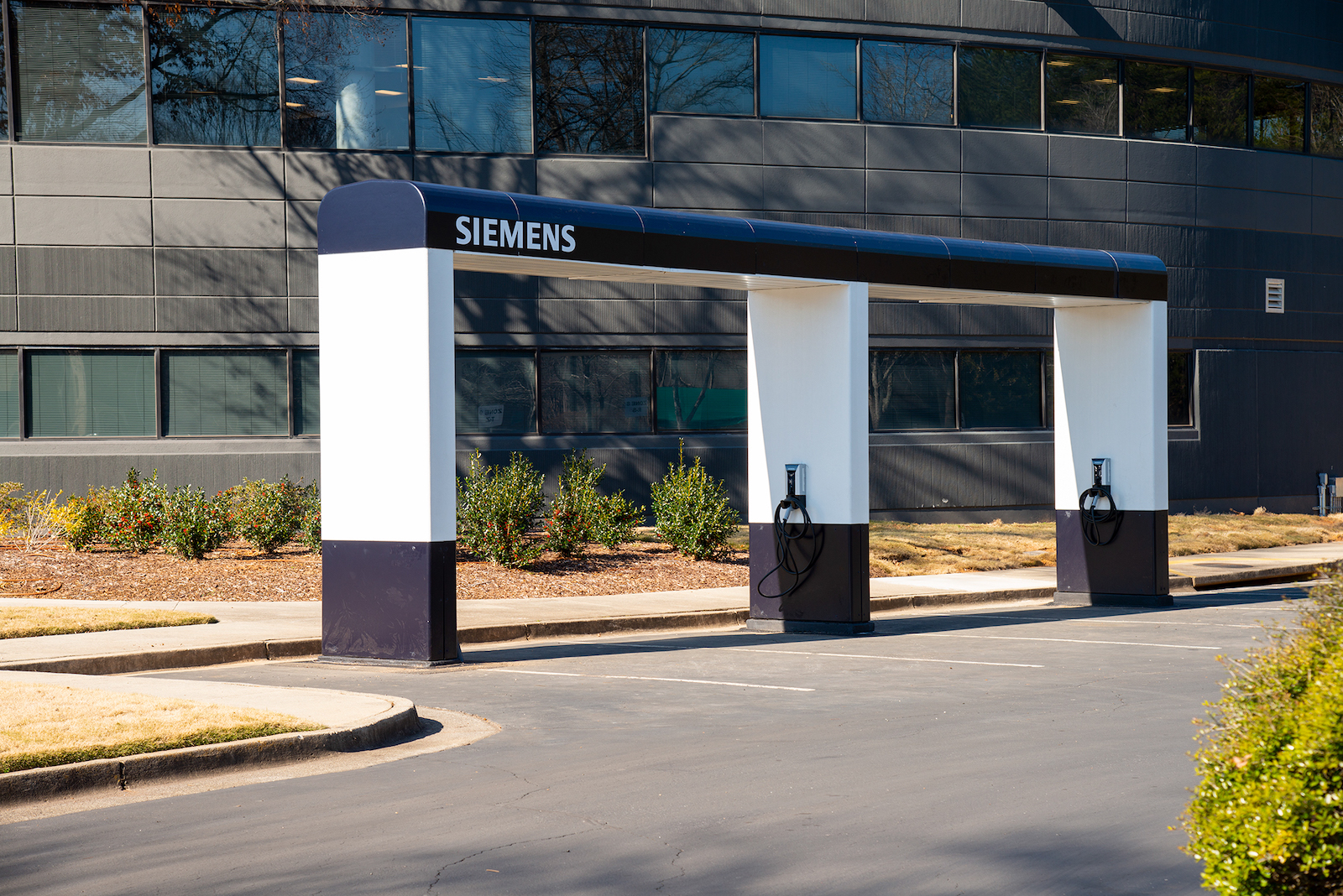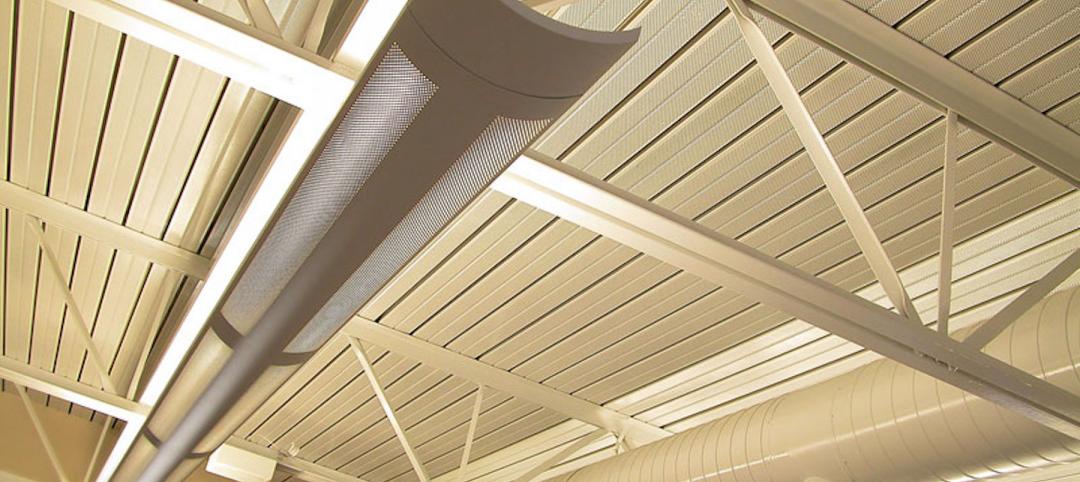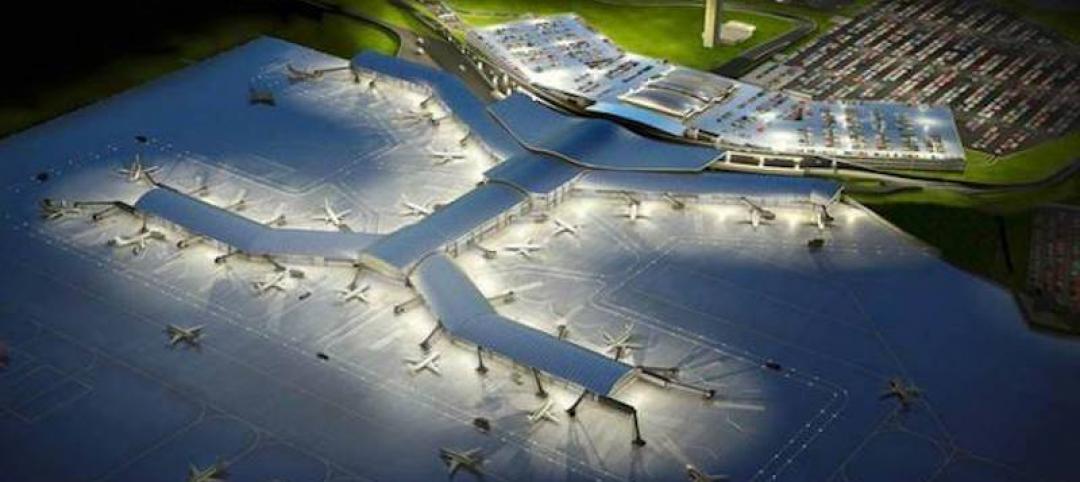Resembling a fueling station, VersiCharge XL—a new electric vehicle (EV) charging concept structure—can charge large numbers of EVs in outdoor areas ranging from small office building parking lots to last-mile logistics hubs to stadium parking lots.
The developers—Siemens Smart Infrastructure, which creates intelligent and adaptive infrastructure, and Nexii Building Solutions, a green construction technology company—say the modular, scalable solution is the industry’s first EV-charging system housing all the necessary electrical infrastructure components in an above-ground, enclosed, and low-carbon structure. The above-ground design minimizes disruption to existing parking lots, while also reducing on-site construction waste and environmental impact.
Rapidly developed in just six months last year, the innovative product was installed in only three days’ time in February at Siemens’ research and development hub for electrical products and e-mobility solutions in Peachtree Corners, Ga.
“The massive growth of electric mobility requires an easy and rapid expansion of a reliable and sustainable charging infrastructure. This specific concept shows how Siemens and its partners are working on new, innovative ideas to help support this growth in the US market,” Markus Mildner, CEO of eMobility at Siemens Smart Infrastructure, says in a statement.
The prototype uses Nexii’s building material Nexiite, which has similar properties as concrete but with significantly less embodied carbon, for the vertical structure supporting the Siemens Sentron Busway systems that power the EV chargers. The co-patented design combines Nexii’s sustainable building products and rapid delivery of green buildings with Siemens’ expertise in residential and commercial chargers, charging depots for commercial fleets, and infrastructure systems to power electrified bus lines.
“Construction and transportation are two of the biggest sources of carbon emissions driving climate change today,” Stephen Sidwell, cofounder and CEO of Nexii, says in a statement. “Bringing together Siemens and Nexii demonstrates the power of rapid ideation and development of solutions to some of the world’s biggest problems.”
Related Stories
Sponsored | BD+C University Course | Jan 30, 2022
Optimized steel deck design
This course provides an overview of structural steel deck design and the ways to improve building performance and to reduce total-project costs.
Projects | Mar 12, 2019
Disney announces opening dates for Star Wars-themed parks
Star Wars: Galaxy’s Edge is the first Disney park to integrate the Play Disney Parks mobile app for greater immersion.
Contractors | Nov 13, 2017
CBRE completes acquisition of Heery International
The deal is expected to expand the real-estate firm’s project management capacities in several U.S. sectors.
Architects | Oct 31, 2017
AIA selects recipients for the 2017 Innovation Awards
The program honors projects that highlight collaboration between design and construction teams to create better process efficiencies and overall costs savings.
Projects | Sep 13, 2017
A new platform offers a solution to construction cost overruns
Rider Levett Bucknall’s Pulse takes project management deeper into financial analysis and forecasting.
Projects | Apr 17, 2017
BD+C's 2017 Design Innovation Report
Façades that would make Dr. Seuss smile, living walls, and exterior wall space that doubles as gallery space are all represented in this year's BD+C Design Innovation Report.
Projects | Jan 25, 2017
Trump prioritizes infrastructure projects, as rebuilding America is now a hot political potato
Both parties are talking about $1 trillion in spending over the next decade. How projects will be funded, though, remains unresolved.
Projects | Jul 29, 2016
From Construction Site to Court Room: How project management is transforming expert witness teams
Applying goal-oriented methodologies and techniques can increase efficiency and reduce costs associated with litigation.
Projects | Aug 21, 2015
Panama Canal expansion nearing completion
An April 2016 opening is scheduled, which will allow bigger-capacity ships to traverse between the Atlantic and Pacific oceans.
















